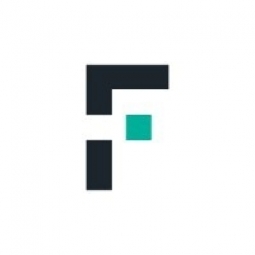公司规模
Large Corporate
地区
- Europe
- America
- Asia
国家
- Netherlands
- Brazil
- China
产品
- Forcepoint Web Security Cloud
- Forcepoint Email Security Cloud
技术栈
- Cloud Computing
- Cybersecurity
实施规模
- Enterprise-wide Deployment
影响指标
- Productivity Improvements
- Digital Expertise
技术
- 网络安全和隐私 - 云安全
适用行业
- 食品与饮料
适用功能
- 商业运营
用例
- 网络安全
服务
- 云规划/设计/实施服务
- 网络安全服务
关于客户
该客户是动物营养和水产饲料领域的全球领先企业。该公司在 30 多个国家/地区拥有 10,000 多名员工。该公司致力于将世界一流的研究成果转化为实用的创新解决方案,为 90 个国家/地区的客户提供支持。该公司敏锐地意识到食品生产供应方面的挑战,并将其部分营业利润用于研究和创新,以推动工业化国家和发展中国家的行业向前发展。
挑战
这家动物营养和水产饲料领域的全球领导者面临着一些地区互联网速度缓慢的挑战,这影响了生产力和研究工作。该公司还通过收购几家较小的公司实现了增长,这让安全问题变得更加复杂,因为新系统被引入其网络,而这些系统可能并不总是具有强大的网络安全措施。该公司是 C 级欺骗和网络钓鱼攻击的目标,目的是窃取收入。该公司需要降低用户浏览危险网页或打开虚假或恶意软件电子邮件的可能性。
解决方案
该公司选择了 Forcepoint 云 Web 和电子邮件安全解决方案,以提供强大的第一道防线,在不影响业务的情况下防止潜在威胁。该解决方案是在现场 Forcepoint 工程师的帮助下部署的。该公司现在拥有有效的安全保障,并在云中协调防御控制,使企业能够专注于战略领域的价值创造。该解决方案在用户与 Web 和电子邮件交互时更好地保护他们,包括 Office 365 等云环境。基于云的 Forcepoint 解决方案部署允许将安全性扩展到新的子公司,而直接连接端点无论身在何处都能提供快速、无缝、安全的互联网用户体验。
运营影响
数量效益

Case Study missing?
Start adding your own!
Register with your work email and create a new case study profile for your business.
相关案例.

Case Study
The Kellogg Company
Kellogg keeps a close eye on its trade spend, analyzing large volumes of data and running complex simulations to predict which promotional activities will be the most effective. Kellogg needed to decrease the trade spend but its traditional relational database on premises could not keep up with the pace of demand.

Case Study
HEINEKEN Uses the Cloud to Reach 10.5 Million Consumers
For 2012 campaign, the Bond promotion, it planned to launch the campaign at the same time everywhere on the planet. That created unprecedented challenges for HEINEKEN—nowhere more so than in its technology operation. The primary digital content for the campaign was a 100-megabyte movie that had to play flawlessly for millions of viewers worldwide. After all, Bond never fails. No one was going to tolerate a technology failure that might bruise his brand.Previously, HEINEKEN had supported digital media at its outsourced datacenter. But that datacenter lacked the computing resources HEINEKEN needed, and building them—especially to support peak traffic that would total millions of simultaneous hits—would have been both time-consuming and expensive. Nor would it have provided the geographic reach that HEINEKEN needed to minimize latency worldwide.

Case Study
Energy Management System at Sugar Industry
The company wanted to use the information from the system to claim under the renewable energy certificate scheme. The benefit to the company under the renewable energy certificates is Rs 75 million a year. To enable the above, an end-to-end solution for load monitoring, consumption monitoring, online data monitoring, automatic meter data acquisition which can be exported to SAP and other applications is required.

Case Study
Coca Cola Swaziland Conco Case Study
Coco Cola Swaziland, South Africa would like to find a solution that would enable the following results: - Reduce energy consumption by 20% in one year. - Formulate a series of strategic initiatives that would enlist the commitment of corporate management and create employee awareness while helping meet departmental targets and investing in tools that assist with energy management. - Formulate a series of tactical initiatives that would optimize energy usage on the shop floor. These would include charging forklifts and running cold rooms only during off-peak periods, running the dust extractors only during working hours and basing lights and air-conditioning on someone’s presence. - Increase visibility into the factory and other processes. - Enable limited, non-intrusive control functions for certain processes.

Case Study
Temperature Monitoring for Restaurant Food Storage
When it came to implementing a solution, Mr. Nesbitt had an idea of what functionality that he wanted. Although not mandated by Health Canada, Mr. Nesbitt wanted to ensure quality control issues met the highest possible standards as part of his commitment to top-of-class food services. This wish list included an easy-to use temperature-monitoring system that could provide a visible display of the temperatures of all of his refrigerators and freezers, including historical information so that he could review the performance of his equipment. It also had to provide alert notification (but email alerts and SMS text message alerts) to alert key staff in the event that a cooling system was exceeding pre-set warning limits.

Case Study
Coca-Cola Refreshments, U.S.
Coca-Cola Refreshments owns and manages Coca-Cola branded refrigerators in retail establishments. Legacy systems were used to locate equipment information by logging onto multiple servers which took up to 8 hours to update information on 30-40 units. The company had no overall visibility into equipment status or maintenance history.



